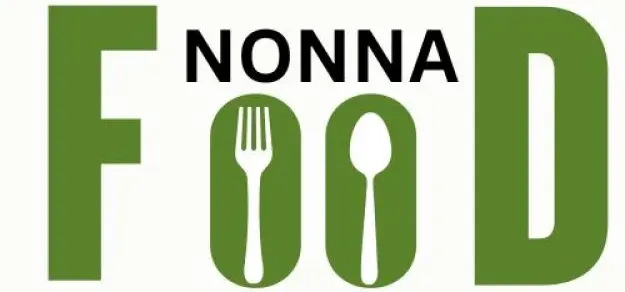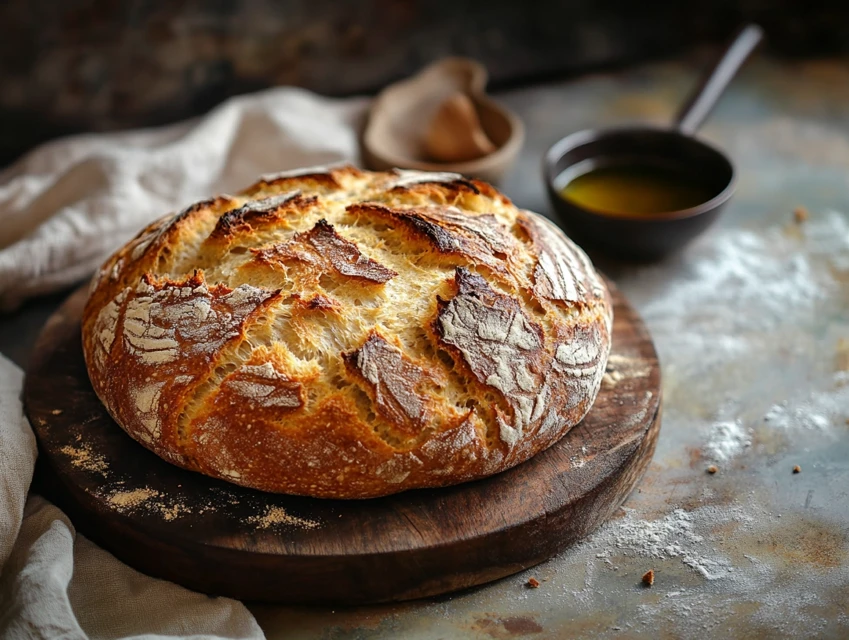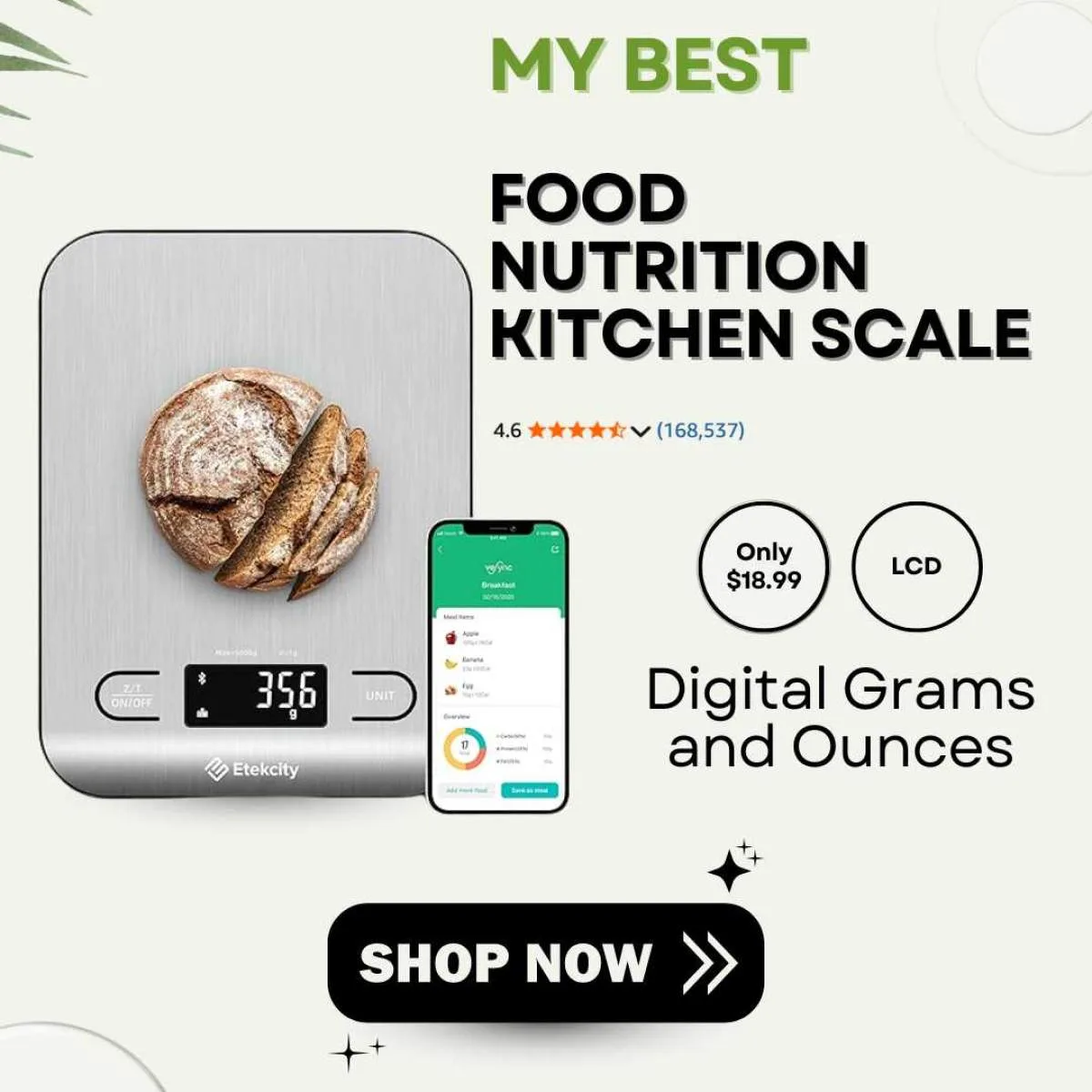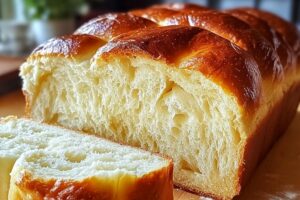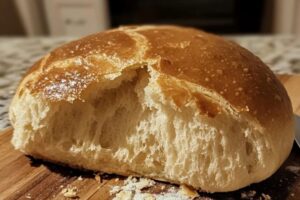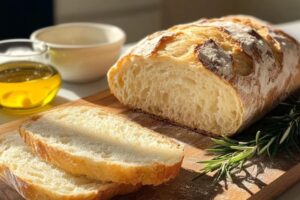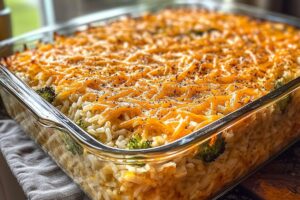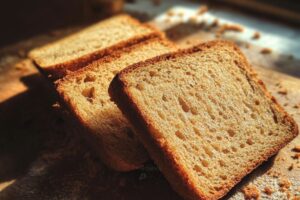No-Knead Sourdough Bread Recipe
Are you ready to embark on a delightful baking adventure? The No-Knead Sourdough Bread Recipe is a fantastic way to create a delicious loaf without the need for extensive kneading. This method is perfect for both beginners and seasoned bakers. With just a few simple ingredients and a little patience, you can enjoy the warm, crusty goodness of homemade sourdough bread.
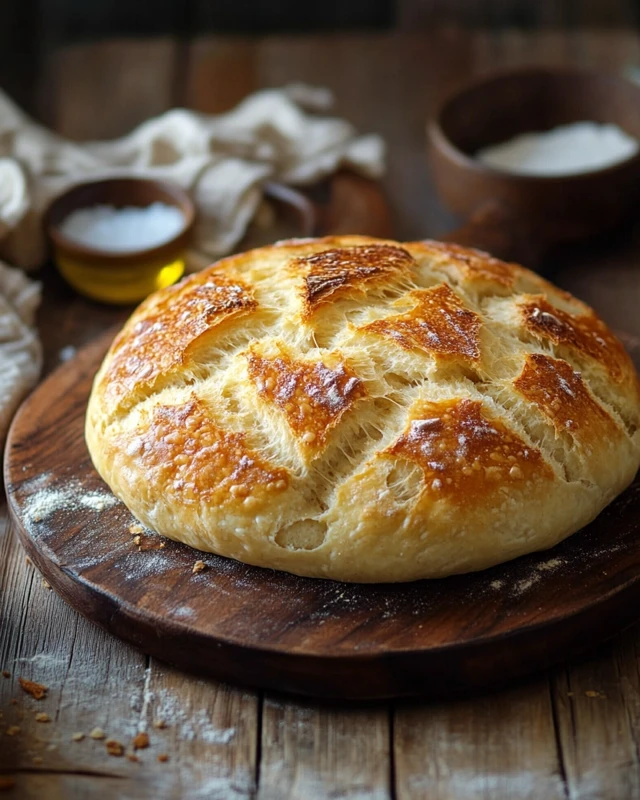
What Makes No-Knead Sourdough Bread Unique?
No-knead sourdough bread stands out for its simplicity and flavor. Unlike traditional bread recipes that require vigorous kneading, this method relies on time and a gentle mixing technique. The long fermentation process allows the dough to develop a rich flavor and a chewy texture. The natural fermentation from the sourdough starter creates a unique taste that is hard to replicate with commercial yeast.
Additionally, the crust of no-knead sourdough bread is often thicker and crunchier, thanks to the steam created in the Dutch oven during baking. This steam helps to create that beautiful golden-brown crust we all love. The result is a loaf that is not only visually appealing but also incredibly satisfying to eat.
Benefits of Making No-Knead Sourdough Bread at Home
Making no-knead sourdough bread at home comes with numerous benefits. First, it’s a cost-effective way to enjoy fresh bread. Store-bought artisan bread can be pricey, but with this recipe, you can create your own for a fraction of the cost.
Moreover, baking at home allows you to control the ingredients. You can choose high-quality flour and ensure your sourdough starter is healthy and active. This means you can avoid preservatives and additives often found in commercial bread.
Another advantage is the satisfaction that comes from baking your own bread. The aroma of freshly baked bread fills your home, creating a warm and inviting atmosphere. Plus, sharing your homemade loaf with family and friends is a wonderful way to connect and create lasting memories.
In summary, the No-Knead Sourdough Bread Recipe is not just about making bread; it’s about enjoying the process and the rewards that come with it. So, let’s dive into the ingredients and get started on this delicious journey!
Ingredients for No-Knead Sourdough Bread Recipe
Before you start your baking adventure, it’s essential to gather all the necessary ingredients for your No-Knead Sourdough Bread Recipe. Each ingredient plays a vital role in creating that perfect loaf. Here’s what you’ll need:
- 3 cups all-purpose flour: This is the foundation of your bread. All-purpose flour provides the right balance of protein and gluten for a chewy texture.
- 1 1/2 teaspoons salt: Salt enhances the flavor of the bread and helps control the fermentation process. It’s crucial for a well-balanced taste.
- 1/2 teaspoon instant yeast: While the sourdough starter does most of the work, a little instant yeast helps kickstart the fermentation process, ensuring a good rise.
- 1 1/2 cups lukewarm water: Water hydrates the flour and activates the yeast. Lukewarm water is ideal as it encourages fermentation without killing the yeast.
- 1/2 cup active sourdough starter: This is the star of the show! Your sourdough starter should be fed and bubbly, ready to impart its unique flavor to the bread.
With these simple ingredients, you’re well on your way to creating a delicious loaf of no-knead sourdough bread. Remember, the quality of your ingredients can significantly impact the final product, so choose wisely!
Step-by-Step Preparation of No-Knead Sourdough Bread Recipe
Now that you have your ingredients ready, it’s time to dive into the step-by-step preparation of your No-Knead Sourdough Bread Recipe. Each step is simple and straightforward, making it easy for anyone to follow along. Let’s get started!
Step 1: Mixing the Dough
Begin by taking a large mixing bowl. In this bowl, combine the 3 cups of all-purpose flour, 1 1/2 teaspoons of salt, and 1/2 teaspoon of instant yeast. Use a whisk to mix these dry ingredients thoroughly. This ensures that the salt and yeast are evenly distributed throughout the flour.
Next, add 1 1/2 cups of lukewarm water and 1/2 cup of your active sourdough starter to the bowl. Using a wooden spoon or spatula, stir the mixture until a shaggy dough forms. Make sure there are no dry pockets of flour left. The dough should be sticky and rough, which is perfectly normal for this recipe.
Step 2: First Rise
Once your dough is mixed, it’s time for the first rise. Cover the bowl with plastic wrap or a clean kitchen towel. Let the dough rise at room temperature for 12 to 18 hours. During this time, the dough will double in size and become bubbly on the surface. This long fermentation is what gives your sourdough its unique flavor and texture.
Step 3: Shaping the Dough
After the dough has risen, it’s time to shape it. Lightly flour a clean surface and gently turn the dough out onto it. With floured hands, carefully shape the dough into a round loaf. Be cautious not to deflate it too much, as you want to keep that airy structure. Once shaped, place the dough on a piece of parchment paper. Cover it with a kitchen towel and let it rest for about 30 minutes. This resting period allows the gluten to relax, making it easier to handle.
Step 4: Second Rise
While the dough is resting, preheat your oven. About 30 minutes before baking, place a Dutch oven (with the lid) in the oven and preheat it to 450°F (230°C). This step is crucial as it creates a hot environment for baking, which helps achieve that perfect crust.
Step 5: Baking the Bread
Once the oven is preheated, carefully remove the Dutch oven. Lift the parchment paper with the dough and place it into the hot pot. Cover it with the lid and bake for 30 minutes. After this time, remove the lid and bake for an additional 15-20 minutes. You’ll know it’s done when the bread is golden brown and has a crispy crust. The aroma will fill your kitchen, making it hard to wait!
After baking, carefully remove the bread from the Dutch oven and let it cool on a wire rack for at least 1 hour before slicing. This cooling period is essential as it allows the bread to finish cooking and helps set the crumb.
And there you have it! Your homemade No-Knead Sourdough Bread is ready to be enjoyed. The process may take time, but the results are well worth the wait!

Variations of No-Knead Sourdough Bread Recipe
Once you’ve mastered the basic No-Knead Sourdough Bread Recipe, you might want to explore some exciting variations. Adding different ingredients can elevate your bread and make it even more delightful. Here are a few ideas to inspire your baking creativity!
Adding Herbs and Spices
Herbs and spices can transform your sourdough bread into a flavorful masterpiece. Consider adding dried herbs like rosemary, thyme, or oregano to the dough. Simply mix in about 1-2 tablespoons of your chosen herbs during the mixing step. For a spicy kick, try adding crushed red pepper flakes or garlic powder. These additions will infuse your bread with aromatic flavors, making it perfect for serving with soups or salads.
Incorporating Whole Grains
If you’re looking for a healthier option, incorporating whole grains is a fantastic idea. You can replace a portion of the all-purpose flour with whole wheat flour or spelt flour. Start by substituting 1 cup of all-purpose flour with whole grain flour. This change not only adds a nutty flavor but also increases the nutritional value of your bread. Whole grains are rich in fiber, making your loaf more filling and wholesome.
Sweet Variations: Adding Fruits and Nuts
For a sweet twist, consider adding fruits and nuts to your no-knead sourdough bread. Dried fruits like cranberries, apricots, or raisins can add a delightful sweetness. Chop them into small pieces and mix in about 1 cup during the dough mixing stage. Nuts like walnuts or pecans can also be a great addition, providing a satisfying crunch. Just remember to chop them coarsely and add about 1/2 cup to the dough. These sweet variations are perfect for breakfast or as a snack!
Experimenting with these variations can lead to unique and delicious loaves of bread. Don’t be afraid to get creative and find combinations that you love. The beauty of baking is that you can tailor your bread to suit your taste preferences!
Cooking Note for No-Knead Sourdough Bread Recipe
When it comes to baking your No-Knead Sourdough Bread Recipe, a few cooking notes can help ensure your success. These tips will guide you through the process and help you achieve that perfect loaf every time.
First, the temperature of your kitchen can affect the fermentation process. If your kitchen is cooler, the dough may take longer to rise. Conversely, a warmer environment can speed up the rising time. Keep an eye on your dough and adjust the rising time as needed. Remember, patience is key!
Next, the quality of your sourdough starter is crucial. Make sure it is active and bubbly before using it in your recipe. A healthy starter will provide the best flavor and rise. If your starter has been in the fridge, feed it a few hours before you plan to bake. This will ensure it’s at its peak performance.
Additionally, using a Dutch oven is highly recommended for this recipe. The heavy lid traps steam, creating a moist environment that helps develop a crispy crust. If you don’t have a Dutch oven, you can use a heavy pot with a lid or even a baking stone. Just be sure to create steam in the oven by placing a pan of water on the bottom rack while baking.
Lastly, don’t skip the cooling time after baking. Allowing your bread to cool on a wire rack for at least an hour helps set the crumb and enhances the flavor. Cutting into the bread too soon can result in a gummy texture, so resist the temptation to slice right away!
By following these cooking notes, you’ll be well on your way to mastering the art of no-knead sourdough bread. Enjoy the process and the delicious results!
Serving Suggestions for No-Knead Sourdough Bread Recipe
Now that you’ve baked your delicious No-Knead Sourdough Bread, it’s time to think about how to enjoy it! This versatile bread pairs wonderfully with a variety of spreads, dips, and toppings. Here are some delightful serving suggestions to elevate your bread experience.
Pairing with Spreads and Dips
Your freshly baked sourdough bread is perfect for pairing with a range of spreads and dips. Here are some tasty options:
- Butter: A classic choice! Spread a generous pat of salted or unsalted butter on warm slices for a simple yet satisfying treat.
- Olive Oil and Balsamic Vinegar: Drizzle some high-quality olive oil and balsamic vinegar on a plate. Dip your bread for a flavorful appetizer that’s sure to impress.
- Hummus: This creamy dip is a fantastic complement to the crusty texture of sourdough. Try different flavors like roasted red pepper or garlic for variety.
- Cheese Spread: Cream cheese or goat cheese spread can add a rich and tangy flavor. Top with herbs or spices for an extra kick.
- Avocado: Mash up some ripe avocado and season it with salt, pepper, and a squeeze of lemon. Spread it on your bread for a healthy and delicious snack.
These spreads and dips not only enhance the flavor of your sourdough but also make for a delightful snack or appetizer for gatherings.
Using in Sandwiches and Toasts
No-knead sourdough bread is also fantastic for making sandwiches and toasts. Here are some ideas to inspire your culinary creativity:
- Classic Sandwiches: Use your sourdough as the base for classic sandwiches. Layer turkey, cheese, lettuce, and tomato for a satisfying lunch.
- Grilled Cheese: Make a gourmet grilled cheese sandwich by using your sourdough. The crispy crust and chewy interior will elevate this comfort food classic.
- French Toast: Transform your leftover sourdough into a delicious breakfast by making French toast. Dip slices in a mixture of eggs, milk, and cinnamon, then cook until golden brown.
- Open-Faced Sandwiches: Top slices of sourdough with various toppings like smoked salmon, cream cheese, and capers for a fancy brunch option.
- Toast with Toppings: Toast slices and add toppings like peanut butter and banana, or ricotta with honey and berries for a delightful snack.
These serving suggestions will help you enjoy your No-Knead Sourdough Bread in various delicious ways. Whether you’re having a casual meal or hosting a gathering, this bread is sure to impress!
Tips for Perfecting Your No-Knead Sourdough Bread Recipe
To ensure your No-Knead Sourdough Bread Recipe turns out perfectly every time, it’s essential to be aware of common pitfalls and how to store your bread properly. Here are some helpful tips to guide you on your baking journey!
Common Mistakes to Avoid
Even the most experienced bakers can make mistakes. Here are a few common ones to watch out for:
- Not Measuring Ingredients Accurately: Baking is a science, so precise measurements are crucial. Use a kitchen scale for the best results, especially for flour.
- Using an Inactive Sourdough Starter: Always ensure your sourdough starter is active and bubbly before using it. A weak starter can lead to poor rise and flavor.
- Skipping the First Rise: The long fermentation time is vital for flavor development. Don’t rush this step; allow the dough to rise fully for the best results.
- Overworking the Dough: Remember, this is a no-knead recipe! Mixing should be gentle. Overworking can deflate the dough and affect the texture.
- Not Preheating the Dutch Oven: Preheating is essential for achieving that crispy crust. Always place your Dutch oven in the oven while it heats up.
By avoiding these common mistakes, you’ll be well on your way to baking a perfect loaf of no-knead sourdough bread!
How to Store Your Bread
Proper storage is key to keeping your No-Knead Sourdough Bread fresh and delicious. Here are some tips:
- Cool Completely: Always let your bread cool completely on a wire rack before storing. This prevents moisture buildup, which can lead to sogginess.
- Use a Bread Bag: Store your bread in a paper or cloth bag to allow it to breathe. Avoid plastic bags, as they can trap moisture and make the crust soft.
- Keep at Room Temperature: Sourdough bread is best stored at room temperature. It can last for about 3-5 days this way.
- Freeze for Longer Storage: If you want to keep your bread longer, slice it and freeze it in an airtight container. It can last for up to 3 months. Just toast or warm slices as needed!
By following these storage tips, you can enjoy your homemade no-knead sourdough bread for days to come!
Breakdown of Time for No-Knead Sourdough Bread Recipe
Understanding the time commitment for your No-Knead Sourdough Bread Recipe is essential for planning your baking day. This recipe involves several stages, each requiring different amounts of time. Here’s a detailed breakdown to help you manage your schedule effectively.
Prep Time
The prep time for this recipe is quite minimal. You’ll spend about 15 minutes mixing the ingredients together. This includes measuring the flour, salt, yeast, water, and sourdough starter, as well as stirring them into a shaggy dough. It’s a quick and straightforward process that anyone can handle!
Cooking Time
Once your dough has risen, the cooking time is approximately 45 to 50 minutes. This includes:
- 30 minutes: Baking with the lid on the Dutch oven, which helps create steam for a perfect crust.
- 15-20 minutes: Baking with the lid off, allowing the crust to become golden brown and crispy.
So, while the actual baking time is relatively short, the overall process is about patience and waiting for the dough to rise properly.
Total Time
In total, you’re looking at a time commitment of around 13 to 19 hours. This includes:
- 15 minutes: Prep time.
- 12 to 18 hours: First rise time, which is crucial for flavor development.
- 45-50 minutes: Cooking time.
While it may seem like a long process, most of this time is hands-off. You can go about your day while the dough rises, making it a convenient option for busy bakers. Just plan ahead, and you’ll be rewarded with a delicious loaf of no-knead sourdough bread!
Nutritional Information for No-Knead Sourdough Bread Recipe
Understanding the nutritional content of your No-Knead Sourdough Bread Recipe can help you make informed choices about your diet. Here’s a breakdown of the key nutritional components per slice of bread, assuming the loaf is divided into 12 slices. Keep in mind that these values can vary based on the specific ingredients used and portion sizes.
Calories
Each slice of your homemade no-knead sourdough bread contains approximately 120 calories. This makes it a satisfying option for breakfast or as a snack. The calorie content comes primarily from the carbohydrates in the flour, which provide energy for your day.
Protein
In terms of protein, each slice offers about 4 grams. While this isn’t a high-protein food, it does contribute to your daily intake. Pairing your sourdough with protein-rich toppings, like nut butter or cheese, can enhance the overall nutritional value of your meal.
Sodium
Each slice contains roughly 150 milligrams of sodium. This amount is relatively low, especially when compared to many store-bought breads. However, if you are watching your sodium intake, be mindful of the toppings and spreads you choose to enjoy with your bread.
Overall, the No-Knead Sourdough Bread Recipe provides a balanced option that can fit well into a healthy diet. It’s a great source of carbohydrates and can be enjoyed in moderation as part of a varied meal plan. Enjoy your baking and the delicious, nutritious bread that comes from it!
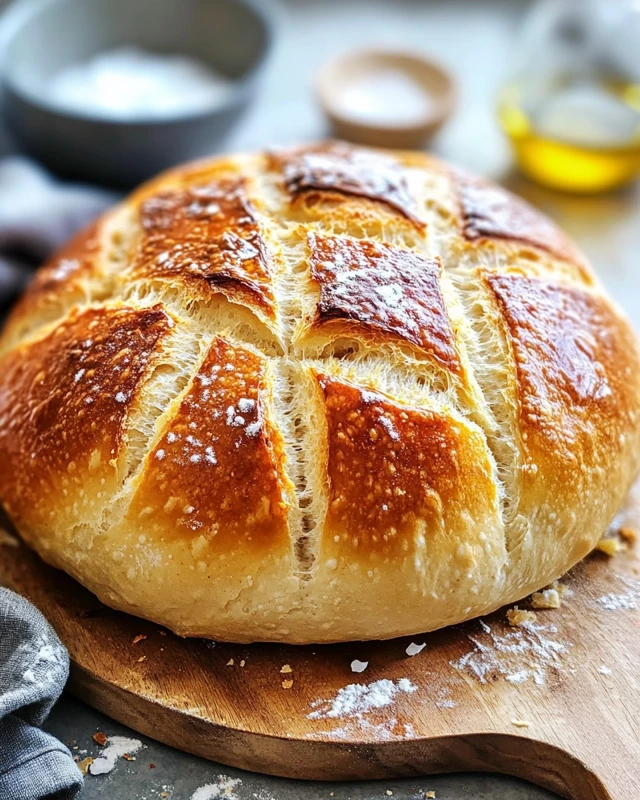
FAQs about No-Knead Sourdough Bread Recipe
Can I use regular yeast instead of sourdough starter?
Yes, you can use regular yeast instead of a sourdough starter. However, the flavor and texture will differ. Sourdough starter provides a unique tangy taste and chewy texture that regular yeast cannot replicate. If you choose to use regular yeast, you can skip the sourdough starter and increase the instant yeast to about 1 teaspoon. This will help your bread rise quickly, but you may miss out on the rich flavor that comes from fermentation.
How long does no-knead sourdough bread last?
Your homemade no-knead sourdough bread can last for about 3 to 5 days at room temperature. To keep it fresh, store it in a paper or cloth bag. If you want to enjoy it longer, consider freezing it. Sliced bread can be frozen for up to 3 months. Just toast or warm the slices as needed, and you’ll have delicious bread ready to enjoy!
What should I do if my dough is too sticky?
If your dough is too sticky, don’t worry! This can happen, especially if you live in a humid environment. You can sprinkle a little extra flour on your work surface and your hands while shaping the dough. However, be careful not to add too much flour, as it can affect the texture of your bread. If the dough remains very sticky, it may need a bit more time to rise, which can help it firm up.
Can I make no-knead sourdough bread without a Dutch oven?
Absolutely! While a Dutch oven is ideal for creating steam and a crispy crust, you can still bake your no-knead sourdough bread without one. If you don’t have a Dutch oven, use a heavy pot with a lid or a baking stone. To create steam, place a shallow pan filled with water on the bottom rack of your oven while baking. This will help achieve a nice crust, even without a Dutch oven!
Conclusion on No-Knead Sourdough Bread Recipe
In conclusion, the No-Knead Sourdough Bread Recipe is a wonderful way to enjoy the art of baking without the fuss of traditional kneading. This method not only simplifies the process but also allows you to create a delicious loaf with a rich flavor and a delightful crust. With just a few simple ingredients and a bit of patience, you can produce a bread that rivals those found in artisan bakeries.
As you embark on your baking journey, remember that practice makes perfect. Each loaf you bake will teach you something new, whether it’s about the fermentation process or how to shape the dough. Don’t hesitate to experiment with different variations, such as adding herbs, whole grains, or even sweet ingredients. The possibilities are endless!
Moreover, the joy of sharing your homemade bread with family and friends is truly rewarding. The aroma of freshly baked sourdough filling your home creates a warm and inviting atmosphere that everyone will appreciate. Whether you enjoy it with a simple spread, as part of a sandwich, or on its own, your no-knead sourdough bread will surely impress.
So, gather your ingredients, follow the steps, and let the magic of fermentation work for you. Happy baking, and may your kitchen be filled with the delightful scent of homemade sourdough bread!

No-Knead Sourdough Bread
Ingredients
Equipment
Method
- In a large mixing bowl, combine the flour, salt, and instant yeast. Whisk to mix thoroughly.
- Add the lukewarm water and active sourdough starter to the dry ingredients. Stir with a wooden spoon or spatula until a shaggy dough forms.
- Cover the bowl with plastic wrap or a kitchen towel and let the dough rise at room temperature for 12 to 18 hours until doubled in size.
- Lightly flour a clean surface and turn the dough out onto it. Shape the dough into a round loaf without deflating it too much.
- Place the shaped dough on a piece of parchment paper and cover it with a kitchen towel. Let it rest for about 30 minutes.
- Preheat your oven to 450°F (230°C) with a Dutch oven inside for about 30 minutes.
- Carefully remove the hot Dutch oven from the oven. Lift the parchment paper with the dough and place it into the pot. Cover with the lid and bake for 30 minutes.
- Remove the lid and bake for an additional 15-20 minutes until the bread is golden brown and has a crispy crust.
- Remove the bread from the Dutch oven and let it cool on a wire rack for at least 1 hour before slicing.
